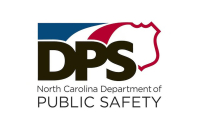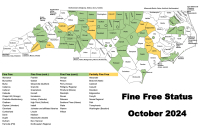Changing of the guard
 I believe the annual treks into the Town of Waynesville’s watershed began back in 2007. They have provided a unique opportunity for interested parties to get a glimpse of the property, learn a little about the history of the watershed, the new management plan and the native flora and fauna. The hikes have been well received, and this fall was no exception.
I believe the annual treks into the Town of Waynesville’s watershed began back in 2007. They have provided a unique opportunity for interested parties to get a glimpse of the property, learn a little about the history of the watershed, the new management plan and the native flora and fauna. The hikes have been well received, and this fall was no exception.
Waynesville to get four electric car charging stations
 A for-profit company will install an electric car charging station in Waynesville’s public parking lot on Montgomery Street.
A for-profit company will install an electric car charging station in Waynesville’s public parking lot on Montgomery Street.
Waynesville sweetens pot for affordable housing project
The Waynesville Board of Aldermen has waived more than $140,000 in water and sewer fees in the hopes that a Polk County developer will construct a low-income affordable housing development on Hyatt Creek Road.
Waynesville employee takes position in Henderson County
Assistant Town Manager Alison Melnikova is leaving Waynesville for a new job, meaning the town is on the search for her replacement.
Looser sign rules could let Waynesville business owners sing it from the rooftops
 Giant blow-up gorillas, bouquets of balloons, plastic banners strung from awnings or poles and billowing fabric figures piped full of air — these previously banned forms of attention-grabbing signage could soon be gracing Waynesville’s businesses under a proposed slate of sign ordinance changes.
Giant blow-up gorillas, bouquets of balloons, plastic banners strung from awnings or poles and billowing fabric figures piped full of air — these previously banned forms of attention-grabbing signage could soon be gracing Waynesville’s businesses under a proposed slate of sign ordinance changes.
Church Street at 30
 Richard Miller can’t believe the Church Street Art & Craft Show is 30 years old.
Richard Miller can’t believe the Church Street Art & Craft Show is 30 years old.
“I don’t know how it got that old, and I didn’t get any older,” he chuckled. “I can’t figure that out.”
Alongside artist Teresa Pennington, Miller founded the festival in 1983. At that time, there were very few shows of its kind in the region, if any. Whereas today there’s seemingly a festival every weekend somewhere in Western North Carolina, Church Street started as a risky idea to get visitors and local residents alike to wander that part of downtown Waynesville. This year’s event will take place on Oct. 12.
Cutting through to your passion
 Standing in his basement workshop, furniture maker Roy DuVerger looks around the cluttered, dusty space. It may look like chaos to some, but to him, it’s the sign of a busy man doing what he loves.
Standing in his basement workshop, furniture maker Roy DuVerger looks around the cluttered, dusty space. It may look like chaos to some, but to him, it’s the sign of a busy man doing what he loves.
At long last, skate park vision now a concrete reality
 Waynesville Alderman Gary Caldwell was the man of the hour, or perhaps the man of the decade, during the official ribbon cutting of the Waynesville Skate Park last Friday.
Waynesville Alderman Gary Caldwell was the man of the hour, or perhaps the man of the decade, during the official ribbon cutting of the Waynesville Skate Park last Friday.
Holding heritage in his hands
 It was a summer job that literally molded itself into a future.
It was a summer job that literally molded itself into a future.
Replacing power poles a never-ending job
If you come across men in bright orange vests directing traffic around crews handling a towering power pole into the ground, steer clear and drive slow.





